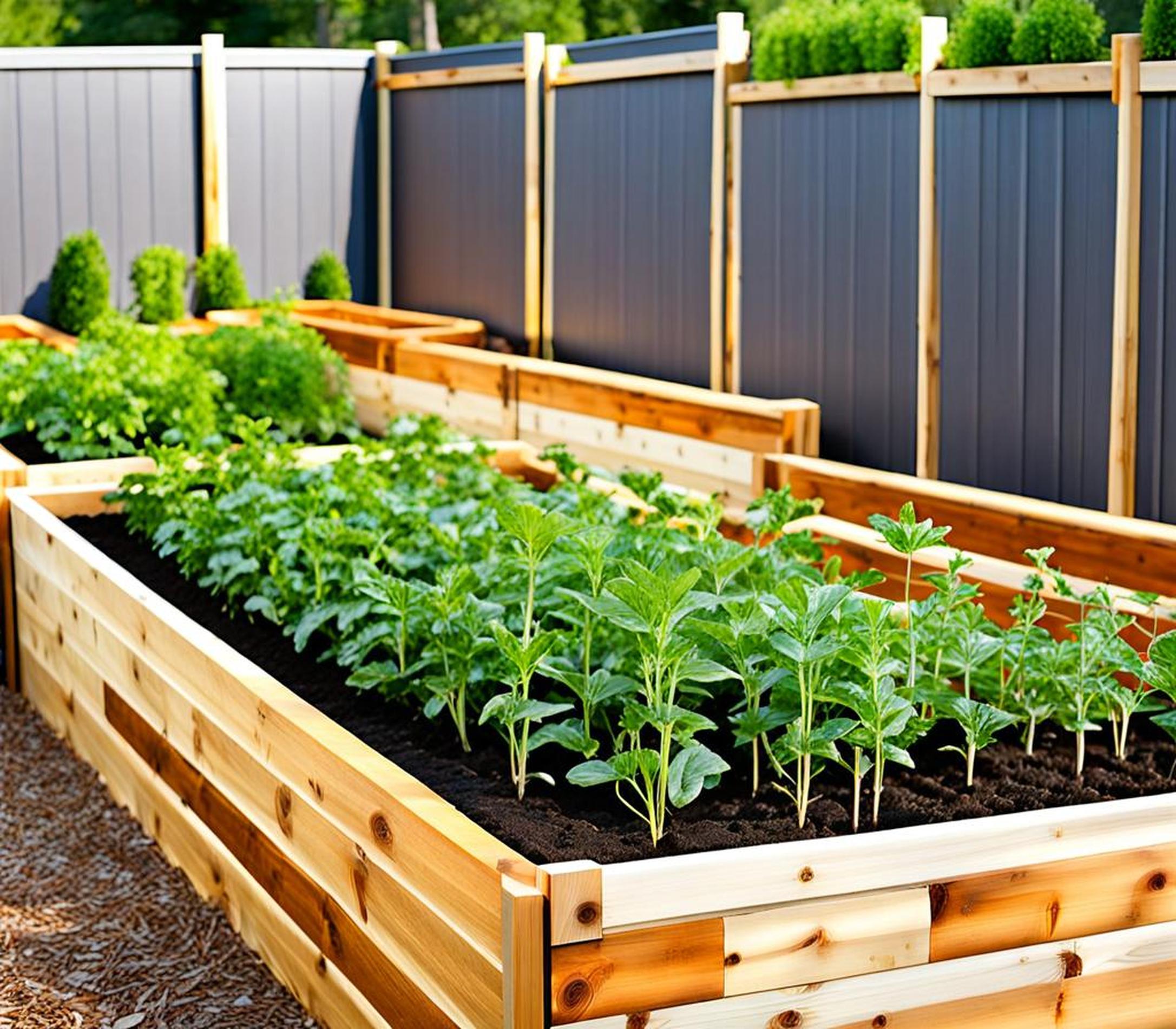Raised bed gardening has exploded in popularity in recent years. Gardeners love the convenience of tending crops at waist height, without stooping or kneeling. Raised beds also allow for superior drainage and enable you to control the soil quality. But the benefits of raised beds depend heavily on choosing the right construction materials. Optimal wood for raised garden beds should be rot-resistant, durable under all weather conditions, and ideally free of chemical treatments.
We’ll look at the pros and cons of woods like cedar, redwood, pine and more based on longevity, cost, and eco-friendliness. Read on to learn wood secrets that will help your plants thrive for years to come.
Durability Matters
When assessing various wood species, rot resistance and durability should be your top concerns. Some woods have natural defenses against decay, while others require treatment to gain longevity.
Rot Resistance
Cedar and redwood both contain oils, resins, and tannins that make them naturally resistant to rotting and insect damage. Pine and fir, on the other hand, lack natural rot resistance. These softer woods will quickly decay when exposed to moisture and soil contact unless properly treated with preservative chemicals.
A lesser known but emerging choice for raised beds is locust wood. Locust trees produce a dense, heavy wood loaded with rot-fighting compounds. Although expensive, its exceptional durability makes locust a long-term investment.
Insect and Pest Resistance
Susceptibility to wood-boring insects and pests is another consideration. Cedar’s natural oils deter termites and carpenter ants. Redwood is also unappetizing to insects. Pine often requires insecticide treatment prior to outdoor use.
Weather Resistance
Moisture and sun exposure will also test your raised bed over time. Heartwood, the inner layer of a tree trunk, resists decay better than sapwood on the outer rings. Tropical hardwoods like teak, ipe, and iroko are incredibly dense and weather-resistant.

Cost Considerations
Wood selection for your raised beds also depends on budget. While premium woods last decades, you can also get a few good years from less expensive options.
Budget-Friendly Options
Pine and Douglas fir are fairly inexpensive lumber choices. Using reclaimed boards or recycled scaffolding planks is also cost-effective. Just be sure they’re in decent condition and suitable for outdoor projects.
Premium Woods
Naturally rot-resistant cedar and redwood are greater upfront investments, running 2-3 times more than pine. But their longevity yields years of productivity. Locust, though pricey, will also stand up to decades of growing seasons.
Imported Tropical Hardwoods
Exotic hardwoods like ipe, tigerwood, or teak offer exceptional weather-resistance if you don’t mind the premium price tag. Imported lumbers must also be sourced from sustainable forests.
Sustainability Factors
For the eco-conscious gardener, sustainability may also influence wood selection. Reclaimed materials and alternatives to chemically treated lumber offer greener options.
Chemical Treatments
Woods labeled “ground contact rated” are safer than general treated lumber. But some gardeners still prefer to avoid chemical preservatives altogether by choosing naturally rot-resistant cedar or redwood.
Reclaimed and Recycled Woods
Using reclaimed building materials or recycled wood is an environmentally friendly option. Just be aware that quality and species may vary. Scrutinize each board for issues before constructing your raised beds.
Rapidly Renewable Woods
Fast-growing softwoods like pine are more sustainable than slow-growing hardwoods because they regenerate quicker. Bamboo is also a rapidly renewable planting. Though not as enduring, these materials reduce pressure on old-growth forests.
Emerging wood products, like beds made from compostable materials such as cornstarch and rice husks, provide a cutting-edge option for sustainably-minded gardeners.
Ideal Uses for Each Wood Type
Here are some quick recommendations for choosing the best wood species based on your priorities:
- Cedar – ideal for longevity, naturally rot-resistant
- Redwood – optimal for decades of use, withstands weathering
- Pine – affordable option, may require treatment
- Douglas fir – budget-friendly, moderate rot-resistance
- Reclaimed – cost-effective reused boards, check condition
Think about your expected usage. If this raised bed is just a temporary solution, pine boards may suffice. For a permanent, multi-year bed, invest in rot-proof cedar or redwood.
Do’s and Don’ts
Proper installation and care will get the most out of your wood raised beds. Be sure to:
- Elevate beds at least 6 inches above ground
- Allow for airflow underneath the bed walls
- Use corner joints for neatly abutting boards
- Seal any cuts or holes made after installation
- Avoid painting or sealing untreated cedar or redwood
And take care when handling lumber to avoid splinters. Wear gloves and safety glasses while cutting and drilling. Now go get growing!
Raised beds are an excellent gardening solution, but much depends on your choice of wood. Opt for naturally decay-resistant species like cedar and redwood for durable, long-lasting beds. Or use cheaper pine or fir if this is a temporary garden installation. And consider sustainability – materials like bamboo, reclaimed boards and compostable wood offer eco-friendly alternatives.
Weigh all the factors – durability, cost, eco-friendliness and intended use when selecting the ideal wood for your raised beds. With the right boards, you’ll be harvesting bountiful, healthy gardens for years to come.
